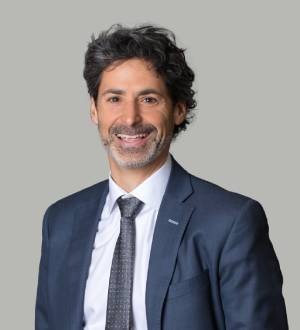Injured, But With No Motor Vehicle Insurance?
Imagine walking along a tightrope high above the ground. There’s a potential that you’ll fall, but you’re not overly concerned about it.
Why? Because you know there’s a literal safety net that will protect you from what would otherwise be an unmitigated disaster. That safety net is akin to having access to motor vehicle insurance in the event of a car accident.
It would be a very, very unpleasant surprise to learn that a safety net was missing. For victims of motor vehicle accidents in Ontario where neither they nor any other involved driver has insurance, it’s a discovery that can dramatically increase their stress and alter their path to recovery.
In this blog post, I explain how even in these situations, victims can file a claim and can still access a safety net of last resort.
Uninsured Motor Vehicle Accidents and Statutory Benefits.
If you’re injured in a motor vehicle accident and you have your own motor vehicle insurance policy, you will be able to apply to access certain benefits provided by law under the Statutory Accident Benefits Schedule (SABS) through your insurer.
Depending on the severity of your injuries, these no-fault insurance benefits provide limited income replacement/non-earner compensation, funds to pay caregivers, attendant care, medical and rehabilitation expenses, death benefits, funeral expenses, housekeeping costs, childcare expenses, and repair/replacement costs for personal items such as eyeglasses damaged in the accident.
If you don’t have your own automobile policy, normally you must apply for SABS through the insurer of the vehicle in which you were an occupant or, in the event you were not in a vehicle, the insurer of the vehicle that struck you. If that vehicle is uninsured, the law states that you must apply for SABS through the insurer of any other vehicle involved in the accident.
But what if neither you nor any vehicle involved in the accident has a policy of insurance? In those cases, Ontario’s Motor Vehicle Accident Claims Fund (MVACF) will be responsible for SABS payments if you are an ordinary resident of Ontario. The MVACF is funded by licensed and insured drivers through licensing fees and their insurance premiums. It’s a failsafe to ensure that motor vehicle accident victims have that “safety net” mentioned above.
It’s estimated that about two per cent, or 180,000, of the province's nine million drivers do not carry valid insurance, despite the fact that driving an uninsured motor vehicle in Ontario is illegal and has potentially serious consequences for the owner, driver and injury victim.Ontario Provincial Police report that, on average, more than 2,000 uninsured vehicles are involved in accidents on provincial roads each year. These accidents cause damages in excess of $125 million.
Unknown/Uninsured Driver Liability.
If you are not at fault for the accident (or only partially at fault), ordinarily you can pursue what is known in law as a “tort claim” for general (pain and suffering) and special (economic loss) damages against the driver who is liable or shares a portion of the liability assigned in the accident. The Family Law Act also provides remedies for specified family members and dependents who suffer damages due to an accident victim’s injuries or death.
Most insured drivers carry $1 million in third-party liability insurance (though personal injury lawyers recommend purchasing the enhanced $2 million option). SABS payments typically do not cover all of a person’s expenses following an accident, so making a claim against a driver who has at some degree of liability provides more fulsome compensation for damages.
For example, accident victims who fall within the SABS minor-injury guideline might receive up to $3,500 of coverage, and victims with more serious but non-catastrophic injuries can access up to $65,000 in benefits. Only injuries deemed catastrophic are eligible for up to $1,000,000 of coverage.
In some cases, the at-fault driver may be unknown (hit-and-run accidents), or otherwise uninsured. In addition to the two per cent of Ontario drivers without insurance, foreign drivers may not carry liability insurance (for example, it’s estimated that between 13-16 per cent of American drivers do not have insurance). Other accidents where there may be no insured driver include off-road vehicle/ATV accidents or accidents involving “rez cars'' on Indigenous reserves.
The MVACF can pay up to $200,000 (including pre-judgment interest) per accident, plus legal costs. It’s important to highlight that this relatively low amount, which is equivalent to Ontario’s minimum automobile insurance liability limits, is the maximum amount of damages the fund will pay collectively per accident - including claims made by family members under the Family Law Act. Therefore, if multiple people are injured and make claims in excess of $200,000, the fund will divide this amount among the eligible claimants.
Help When You’re Hurt.
Dealing with private insurers to access appropriate compensation through SABs can be difficult, and when the MVACF is responsible for paying SABS, it’s no different. It’s always advisable to consult an experienced motor vehicle accident lawyer to inform you about your legal rights with respect to proper compensation and coverage.
At Gluckstein Lawyers, we’ve helped people just like you who have been injured in a motor vehicle accident where the driver is either unknown or uninsured. We draw on our network of medical experts to ensure your injuries and disabilities are accurately assessed. And we have experience negotiating with insurers and the MVACF if there is a dispute over the appropriate level of benefits and compensation you deserve.
Receiving benefits and damages from the MVACF is a last resort for accident victims who cannot make claims elsewhere. But even if you are down to your last resort, retaining top quality legal advocacy and representation is essential. To learn more about how our car accident lawyers can assist you in the event of a motor vehicle accident, contact us for a no cost, no obligation initial consultation
















